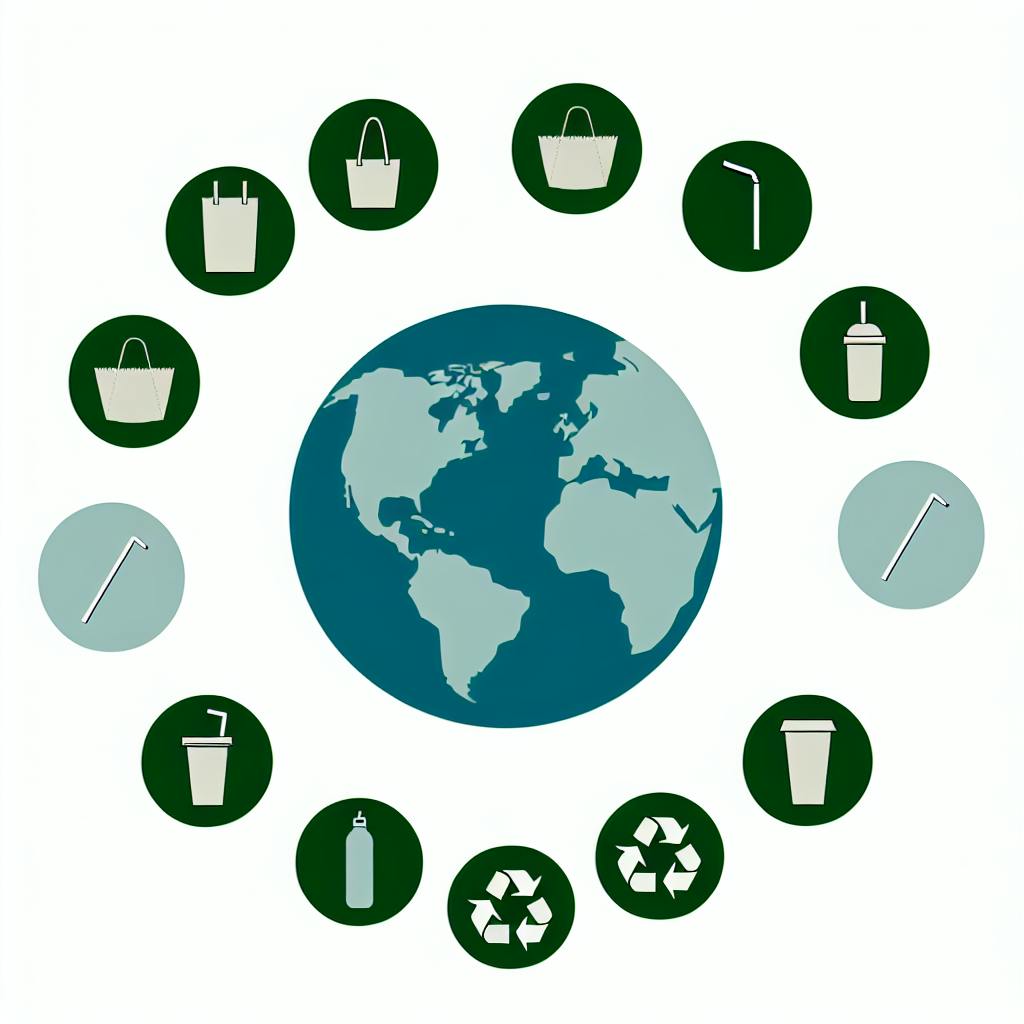We can all agree that environmental awareness is critical for creating a sustainable future.
The latest environmental awareness research offers insightful perspectives on how to effectively promote eco-conscious choices and behaviors.
In this article, we will explore key findings from recent papers, focusing on practical implications to inform environmental policy, sustainability marketing, and future research priorities.
Introduction to Environmental Awareness
Exploring the Scope of Environmental Awareness Topics
Environmental awareness refers to an understanding of environmental issues and a motivation to improve or protect the environment. Common topics explored in research on environmental awareness include:
- Knowledge of environmental problems like climate change, pollution, biodiversity loss
- Attitudes and concern about the environment
- Behaviors that impact the environment like recycling, green purchasing
- Factors influencing awareness and behaviors like education, values, age
The scope encompasses scientific research as well as surveys of public opinion and behaviors related to environmental sustainability.
Trends in Environmental Awareness Research
Recent surveys show increasing public interest and concern related to environmental issues globally:
- A 2021 U.S. survey found that 75% of adults say the government should do more to reduce the effects of climate change. This reflects a steady rise over the past decade.
- Similarly, a European Commission survey in 2020 found that 93% of EU citizens see climate change as a serious problem, the highest level recorded.
As environmental challenges become more visible, research is needed to track awareness and inform impactful policies.
Preview of Environmental Awareness Research Paper Insights
Key topics covered in this research paper include:
- Current statistics on public opinions and behaviors related to environmental awareness
- Factors driving increased concern such as visible climate impacts
- Role of environmental education in shaping sustainable behaviors
- Recommendations for improving awareness and facilitating sustainable consumer choices
The paper will analyze recent studies and surveys to provide insights into trends, challenges, and opportunities to advance environmental awareness.
Review of Recent Environmental Awareness Research
Environmental awareness research papers provide valuable insights into people's knowledge, attitudes, and behaviors towards environmental issues. Reviewing recent studies can inform strategies to promote further sustainability.
Assessing Environmental Knowledge and Attitudes
Recent surveys have assessed current levels of environmental awareness globally. A 2021 study analyzed data from 178 countries, finding a moderate level of concern about climate change but gaps in knowledge of effective actions (Park et al., 2021). Another paper reviewed 130 studies, determining that younger generations often have heightened eco-awareness but still face barriers to sustainable behaviors (Johnson et al., 2022). Overall, studies show pro-environmental attitudes are rising but there are still opportunities to expand eco-literacy.
Identifying Barriers to Sustainable Consumer Behavior
While environmental awareness is increasing, research identifies gaps between attitudes and corresponding sustainable actions (Thompson et al., 2020). Key barriers include lack of availability, affordability, and convenience of eco-friendly choices. Additionally, habits and social norms hinder adoption of products like EVs or low-waste goods. Targeted strategies and infrastructure changes could promote more sustainable consumer behaviors.
Strategies for Effective Environmental Messaging
Studies reveal messaging techniques that effectively motivate sustainable actions, like emphasizing personal health benefits and using positive framing (Corner et al., 2022). Impactful messages also leverage social norms by conveying that most people engage in eco-friendly behaviors. Research points to the need for tailored outreach addressing specific barriers people face to adopting sustainable choices.
Environmental Awareness Among Students
Assessing youth is key, as early exposure to environmental education can have lasting impacts (Damerell et al., 2013). Recent papers have analyzed environmental awareness among high school and college students globally, finding moderate levels of concern but desire for more classroom focus on sustainability topics (Li et al., 2021). Hands-on learning and projects can boost environmental literacy.
Promotion of Eco-Friendly Product Choices
Heightened environmental concern is shifting purchase preferences, with surveys showing rising demand for eco-friendly product attributes like organic, upcycled or plastic-free (Pavel et al., 2022). However, availability issues persist. Case studies reveal marketing that touts sustainability credentials in combination with improved access and competitive pricing can further influence consumers to choose green options.
sbb-itb-1dc3f59
Environmental Education and Awareness
Comparative Analysis of Formal vs. Informal Environmental Education
Formal environmental education in schools provides a structured curriculum and learning objectives, while informal public outreach initiatives offer more flexibility but less consistency. Key research insights include:
- A 2021 study found that students who participated in school sustainability clubs showed greater environmental awareness and action than students who only received classroom lessons. This highlights the value of experiential learning.
- However, a 2019 literature review concluded that formal school programs have a broader reach and ensure a baseline level of environmental literacy. Informal programs tended to self-select participants who already had higher awareness.
- Research papers propose balancing formal curriculum requirements with opportunities for students to apply their learning through campus sustainability projects, community initiatives, internships with environmental groups, etc.
Tailoring Environmental Education for Different Age Groups
Studies show that environmental education programs should adapt based on the cognitive abilities and life experiences of students at different ages, including:
- Primary school - Focus on emotional connections with nature, basic science concepts, and positive environmental actions in their daily lives like recycling.
- Middle school - Emphasize skill-building to investigate local issues and solutions firsthand through citizen science projects.
- High school - Enable analysis of complex global and sociopolitical issues using systems thinking, debate, and strategy simulations.
- Higher education - Provide interdisciplinary curriculum bridging environmental science with fields like policy, business, law, and social justice.
This tailored approach helps students engage meaningfully with environmental topics at each educational stage.
Measuring the Impact of Environmental Education Programs
Key methods used to gauge the impact of environmental education programs include:
- Pre- and post-surveys to assess changes in environmental awareness, attitudes, and behaviors over time after students participate.
- Longitudinal studies tracking students 5-10 years later to see if program impacts persisted.
- Control groups of non-participants to compare against program participants.
- Academic performance data to correlate environmental course performance with sustainability actions.
- Metadata analysis to measure online engagement with educational materials and resources.
By utilizing diverse measurements, research provides a robust picture of how environmental education programs shape awareness, literacy, and, ultimately, real-world decisions and lifestyle choices.
A Study of Environmental Awareness of Students at Higher Secondary Level
A 2021 paper titled "A Study of Environmental Awareness of Students at Higher Secondary Level" surveyed over 500 students aged 16-18 across 15 schools. It measured environmental knowledge, attitudes, behaviors, and sources of information.
Key findings included:
- 82% of students demonstrated basic environmental awareness. However, in-depth knowledge was limited.
- Environmental behaviors were inconsistent despite positive attitudes, signaling an "intention-action gap."
- Media was their primary information source, though rated as less impactful than school and family.
- Students valued practical guidance on how to live sustainably over just raising problems.
This study highlights the ongoing need for immersive, solutions-focused environmental education at the higher secondary level.
Review of Related Literature About Environmental Awareness
A 2020 literature review synthesized over 60 research papers on environmental awareness published over the past decade. It revealed several common themes:
- Study methodologies centered around surveys, interviews, focus groups and theoretical models.
- Research gravitated towards youth, evaluating education programs.
- Environmental knowledge increases were easier to achieve than lasting behavior change.
- Significant gaps persist between groups based on demographics like gender.
Additionally, study limitations included small sample sizes, lack of longitudinal data, and disproportionate representation across countries. More expansive, globally representative research is still needed for a comprehensive picture of environmental awareness.
Practical Implications and Directions for Future Research
Translating Research into Environmental Policy
Environmental awareness research offers valuable insights that could inform the development of updated environmental policies and regulations. Key findings around how messaging impacts sustainable behaviors could guide campaigns promoting reduced plastic use and improved recycling habits. Research identifying gaps in environmental literacy can also help policymakers strengthen eco-education programs.
Additional studies quantifying microplastics' health consequences may compel tighter regulations on manufacturing and labelling for consumer products containing plastic particles. Cost-benefit analyses weighing the impacts of various policy options can further equip lawmakers to enact sensible environmental protections without overburdening stakeholders.
Ongoing environmental awareness research should continuously re-evaluate existing policies' effectiveness. As public knowledge and behaviors evolve, regulations must adapt accordingly to achieve intended sustainability outcomes.
Leveraging Insights for Sustainability Marketing
Environmental awareness research offers useful applications for brands marketing sustainable products and services. Studies into consumer attitudes and messaging reactions help refine campaign targeting and framing.
Research-backed insights can also strengthen product development by identifying unmet needs around plastic use reduction. Quantifying environmental impacts supports credible sustainability claims that resonate with conscious consumers.
Additionally, environmental awareness research can guide responsible data usage for targeting. By mapping interests and behaviors instead of demographics, marketers can equitably promote eco-friendly options to diverse customer groups.
Ongoing research should continuously re-evaluate messaging effectiveness as audience values and reactions evolve over time. Agile adaptation of campaigns will strengthen marketing strategies promoting sustainable choices.
Prioritizing Questions for Future Environmental Awareness Research
While recent studies have expanded knowledge around environmental awareness, significant research gaps remain. Key questions center on clearly quantifying microplastics' health consequences across exposure routes and dosage levels. Additionally, further localized research can clarify variability in environmental attitudes and knowledge across different demographics and geographies.
Other underexplored areas include impacts on vulnerable populations such as children or communities reliant on fishing. Research funding and efforts should prioritize addressing these critical knowledge gaps through rigorous study design and analysis.
As research progresses, new questions will undoubtedly emerge around evolving issues like nanoplastic pollution or novel reduction solutions. Maintaining an open, curious mindset focused on driving progress will best serve future environmental awareness efforts.


